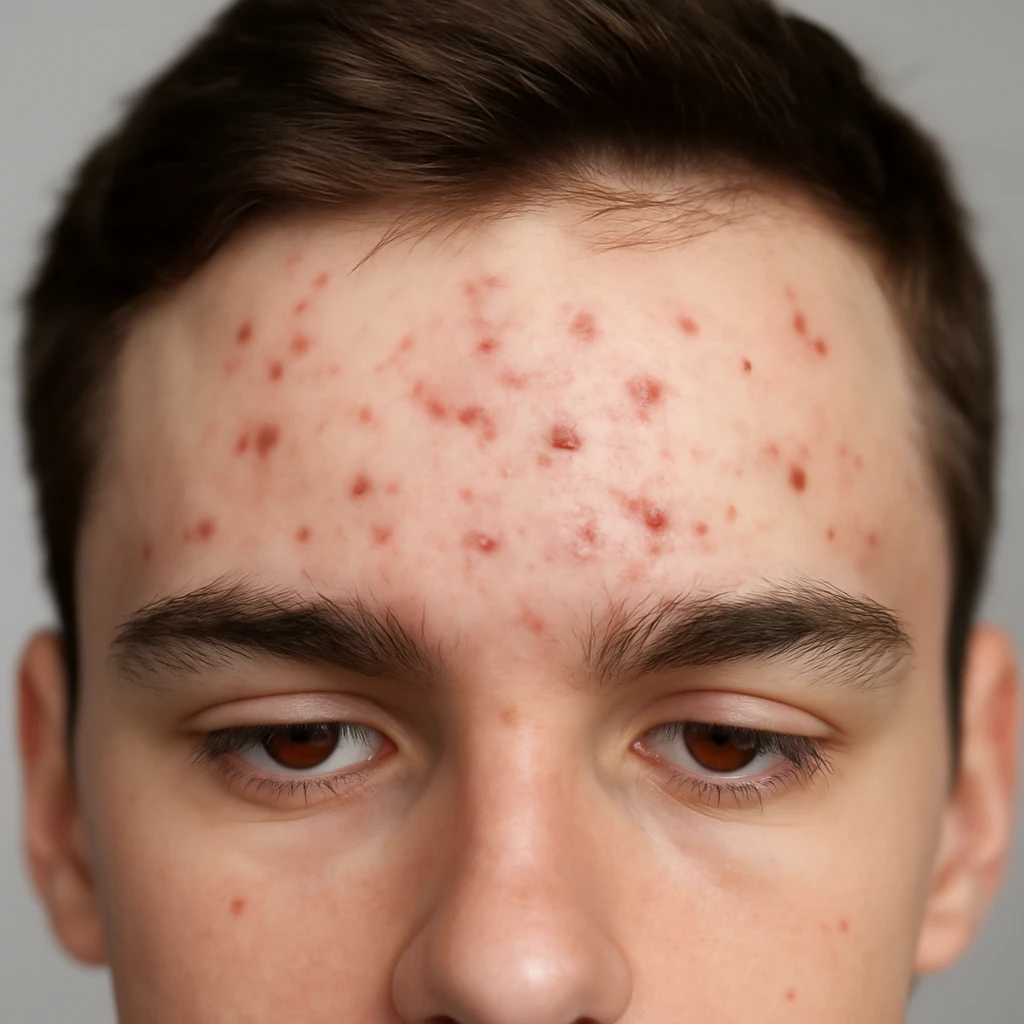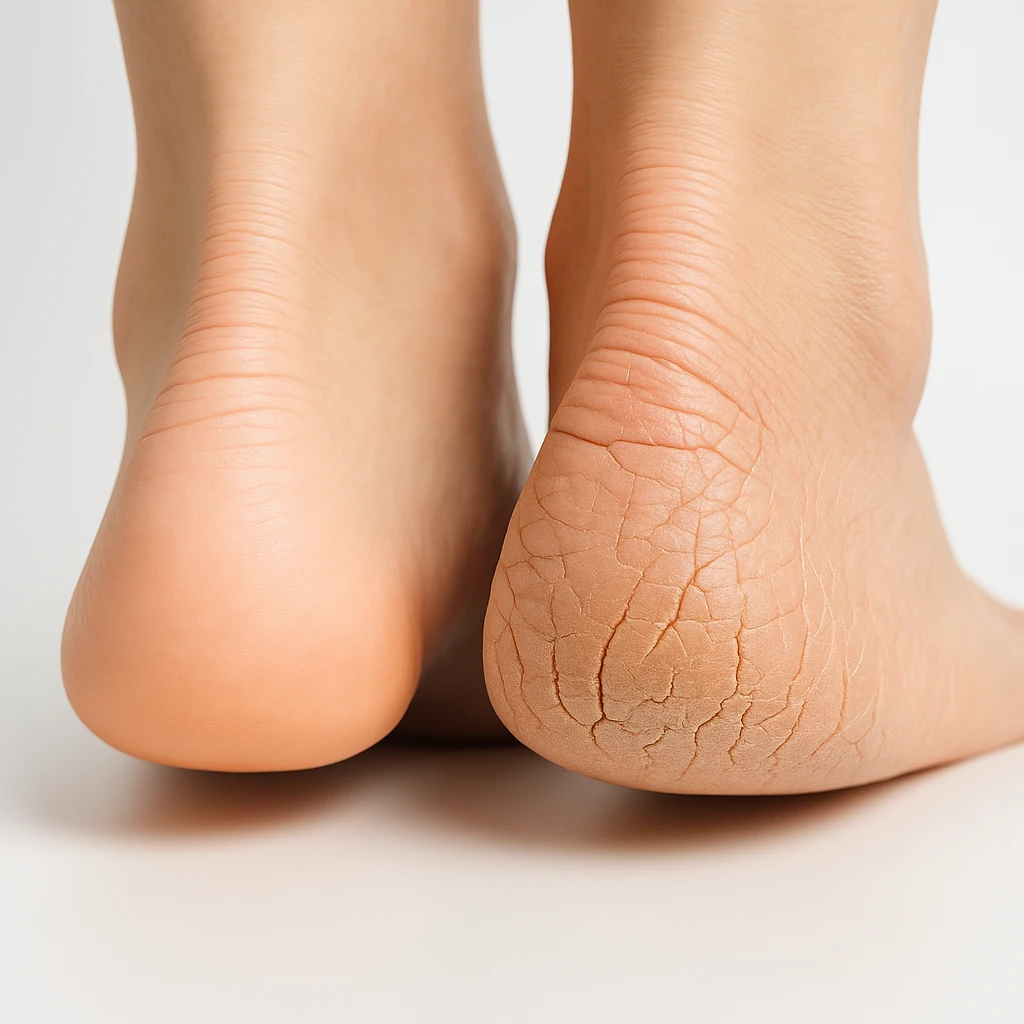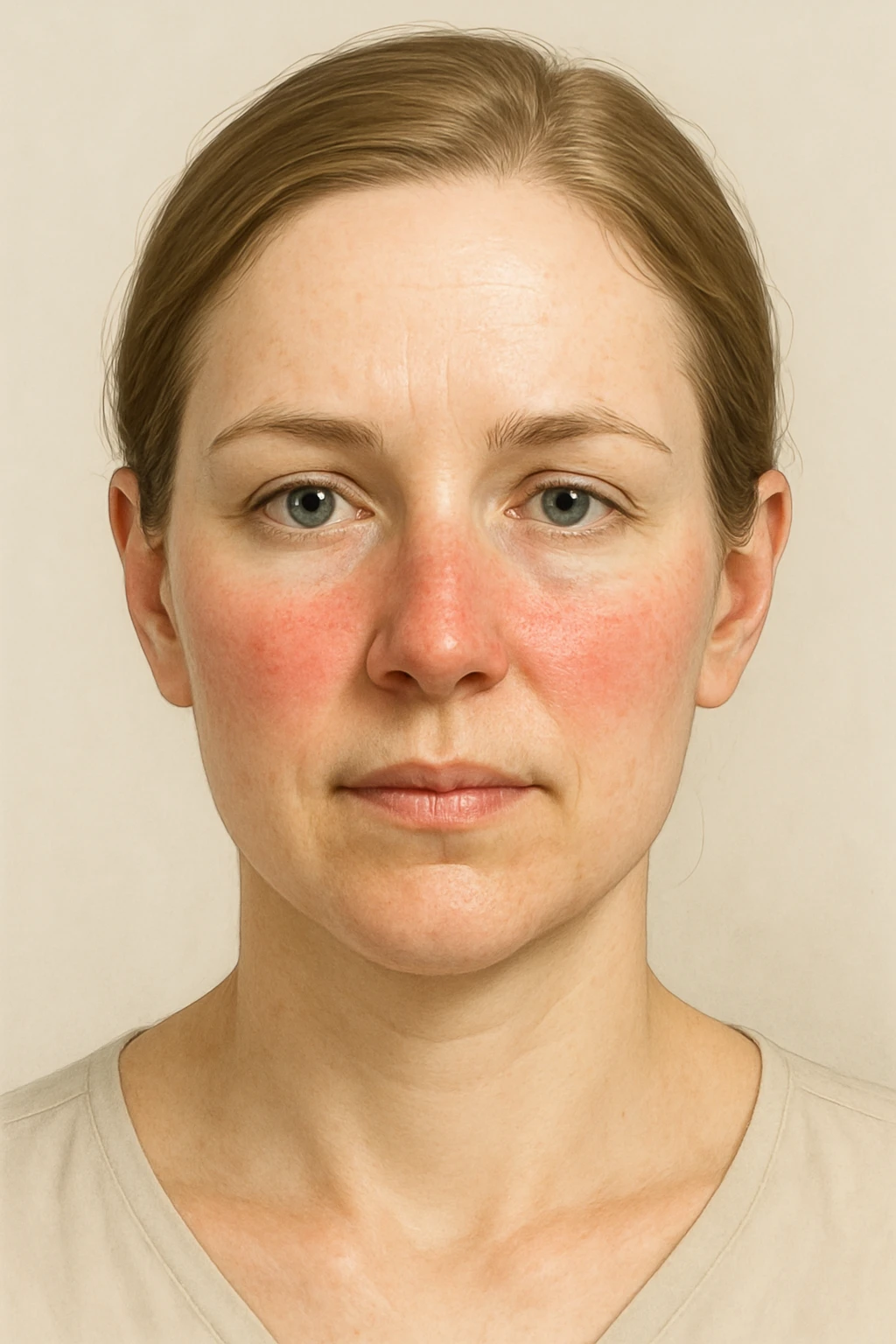Common Causes of Acne on the Forehead and How to Prevent Breakouts
Causes of Forehead Acne and Contributing Factors
Clogged Pores and Excess Oil
Acne on the forehead is primarily caused by clogged pores, which can occur when excess oil and dead skin cells accumulate in hair follicles. The forehead, like other parts of the face, produces oil (sebum) to moisturize the skin. However, excessive oil production, particularly in individuals with oily or combination skin, can mix with dead skin cells and clog pores. This blockage creates an environment where bacteria can thrive, leading to inflammation and acne outbreaks.
Hormonal Factors and Stress
Hormones play a significant role in the development of acne on the forehead. During puberty, hormonal fluctuations increase oil production, contributing to clogged pores and acne. In women, hormonal changes related to menstruation or conditions like polycystic ovarian syndrome (PCOS) can worsen acne. Stress also exacerbates acne by triggering the release of cortisol, a hormone that stimulates oil production, leading to more breakouts.
Lifestyle and Environmental Factors
Certain lifestyle and environmental factors can contribute to forehead acne. Diet, particularly high-glycemic foods and dairy products, may worsen acne for some individuals. Additionally, certain medications, like steroids, can trigger acne outbreaks. Environmental factors, such as humidity and pollution, can clog pores and irritate the skin, especially on areas like the forehead exposed to sweat and oil. Managing these factors is essential for acne prevention.
Assessing the Severity of Forehead Acne
Mild Acne
Mild acne typically consists of small pimples, blackheads, or whiteheads. These breakouts are usually localized and do not cause significant pain or inflammation. Mild acne can often be managed effectively with over-the-counter topical treatments such as benzoyl peroxide, salicylic acid, or retinoids. These treatments work by reducing oil production, unclogging pores, and preventing future breakouts.
Moderate to Severe Acne
Moderate to severe acne is characterized by larger pimples, cysts, or inflamed nodules that may cause pain and scarring. This type of acne can be widespread and may not respond well to over-the-counter treatments. Oral medications, such as antibiotics or hormonal therapies, and stronger topical treatments may be needed to control inflammation and bacteria. These treatments target deeper layers of the skin to prevent further damage, helping to reduce scarring and improve skin appearance.
Topical Treatments for Forehead Acne
Benzoyl Peroxide
Benzoyl peroxide is a common topical treatment for forehead acne. It targets acne-causing bacteria, reduces inflammation, and helps break down excess oils and dead skin cells. Available in different concentrations, benzoyl peroxide can be used for mild to moderate acne. It’s important to start with a lower concentration to minimize irritation and gradually increase usage as the skin adapts.
Salicylic Acid
Salicylic acid is an effective treatment for acne, especially for clogged pores and blackheads. This beta-hydroxy acid (BHA) works by exfoliating the skin and removing dead skin cells that can block pores. It also helps reduce swelling and redness. Salicylic acid is commonly found in cleansers, toners, and spot treatments, making it a versatile option for managing forehead acne.
Retinoids
Retinoids, derived from Vitamin A, are often prescribed for persistent or severe acne. These treatments help by increasing skin cell turnover, which prevents clogged pores and reduces the formation of new pimples. Retinoids also aid in fading acne scars over time. Stronger concentrations are typically prescribed for more severe acne, and it’s important to apply them at night due to increased skin sensitivity to sunlight.
Oral Medications for Severe Acne
Antibiotics
For severe forehead acne, oral antibiotics may be necessary to control acne-causing bacteria and reduce inflammation. Common antibiotics, such as doxycycline and minocycline, target bacteria in the skin’s pores and help reduce redness and swelling. These medications are often prescribed when topical treatments are ineffective. Long-term use can lead to side effects, including stomach upset and increased sun sensitivity, so following the prescribed duration is essential.
Hormonal Therapy
Hormonal therapies, particularly oral contraceptives, are effective in treating acne for women by regulating hormones that trigger acne outbreaks. These treatments balance androgen levels, which are responsible for increasing oil production in the skin. By reducing oil production, hormonal therapy helps prevent acne on the forehead and other areas. However, potential side effects like mood changes and increased risk of blood clots may occur, making it important to consult with a healthcare provider before starting this treatment.
Preventing Acne on the Forehead: Lifestyle Tips and Care
Skincare Routine
Maintaining a consistent skincare routine is one of the most effective ways to reduce acne outbreaks on the forehead. A daily routine should include gentle cleansing, moisturizing, and avoiding harsh products that can irritate the skin.
- Cleansing twice a day with a mild, non-comedogenic cleanser helps remove excess oil and dirt that can clog pores.
- Following up with a light moisturizer ensures the skin stays hydrated without exacerbating acne.
- Avoid scrubbing the skin aggressively, as this can lead to irritation and worsen acne.
- Using products with ingredients like salicylic acid or benzoyl peroxide can help prevent breakouts and keep the skin clear.
Diet and Stress Management
Dietary changes play a role in preventing acne flare-ups, especially on the forehead. Reducing the intake of dairy products and high-glycemic foods, such as white bread and sugary snacks, may help manage acne symptoms for some individuals. These foods can increase insulin levels, which in turn can boost oil production in the skin, contributing to acne. Along with dietary adjustments, managing stress is crucial for acne prevention. Stress triggers the release of cortisol, a hormone that stimulates oil production, leading to more breakouts.
- Practicing stress-relief techniques like deep breathing, yoga, or regular physical activity can help balance hormone levels and reduce the likelihood of acne flare-ups.
When to Seek Professional Help for Forehead Acne
Signs That Indicate Professional Care
If your acne persists or worsens despite at-home treatments, it may be time to seek professional help from a dermatologist. There are specific warning signs that indicate when acne on the forehead requires medical intervention:
- Cystic Acne: Large, painful, and deep pimples that are often inflamed and can lead to scarring.
- Severe Acne: Acne that covers a large area of your forehead or other parts of your face and is resistant to over-the-counter treatments.
- Scarring: Acne that leaves noticeable scarring, whether from cysts or persistent breakouts.
Timely intervention can help manage symptoms effectively and prevent further complications, ensuring that your skin stays as clear as possible.
- Forehead acne is caused by clogged pores due to excess oil, dead skin cells, or bacteria.
- Hormonal changes, stress, and certain medications contribute to forehead acne development.
- Conditions like PCOS can worsen acne on the forehead.
- Topical treatments like benzoyl peroxide and salicylic acid are effective for mild to moderate acne on the forehead.
- Severe forehead acne may require oral antibiotics or hormonal therapies for treatment.
- Regular skin cleansing and avoiding pore-clogging oils help control acne outbreaks.
- Mild acne on the forehead is often treatable with topical products alone.
- Moderate to severe forehead acne typically requires stronger treatments or professional care.
- Dermatological treatment is recommended for severe acne on the forehead to prevent scarring.
- Consistent skincare routines are crucial for preventing acne outbreaks on the forehead.
- What causes acne on the forehead? Forehead acne is primarily caused by clogged pores due to excess oil, dead skin cells, and bacteria. Hormonal changes, stress, and certain medications can also contribute.
- How can I treat mild forehead acne? Mild forehead acne can often be managed with over-the-counter topical treatments like benzoyl peroxide, salicylic acid, or retinoids. These help reduce oil production and unclog pores.
- What should I do if my acne becomes severe? Severe acne on the forehead may require oral antibiotics or hormonal therapies. It’s important to consult a dermatologist to prevent scarring and manage persistent breakouts.
- Can stress make my forehead acne worse? Yes, stress can trigger the release of cortisol, a hormone that increases oil production in the skin, leading to more breakouts.
- What lifestyle changes can help prevent forehead acne? Maintaining a consistent skincare routine, reducing dairy and high-glycemic foods, and practicing stress-relief techniques like yoga or deep breathing can help prevent forehead acne.
- Is scarring a risk with forehead acne? Yes, severe acne on the forehead, especially cystic acne, can lead to scarring. Early treatment and professional care can help minimize this risk.
- How can I tell if my acne needs professional treatment? If your acne covers a large area, is resistant to over-the-counter treatments, or causes noticeable scarring, it’s time to consult a dermatologist.
- Can diet affect acne on the forehead? Yes, certain foods, especially dairy and high-glycemic foods, can increase oil production and worsen acne, including on the forehead.













